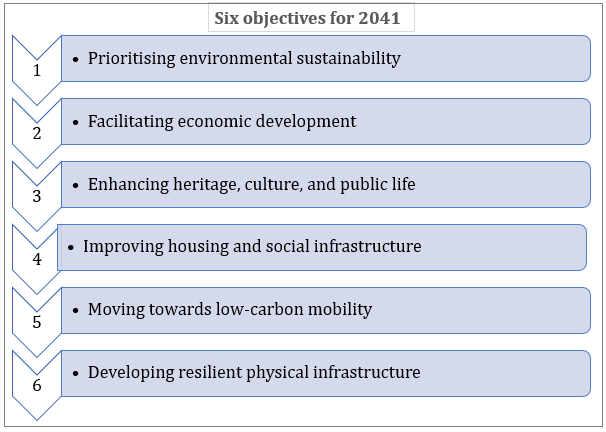“Foster a Sustainable, Liveable and Vibrant Delhi” – that is the aim of the Delhi Master Plan 2041 (DMP) put out earlier this month for the public to offer their comments and suggestions.
The draft of the Master Plan for Delhi 2041 comprises two volumes and 22 chapters, which seeks to “foster a sustainable, liveable and vibrant Delhi by 2041”. The first volume is an introduction, providing an overview of Delhi in present times, its global and regional positioning, estimates of population, and projections for 2041. The second volume outlines the spatial development strategy and action plan.
In this article, RoofandFloor takes a look at some of the major highlights of the master plan.
Did you know?
The first Master Plan for Delhi was promulgated in 1962 under the Delhi Development Act of 1957, followed by the Master Plans of 2001 and 2021.
The focus areas

What’s in for the housing sector?
High land prices in the city have resulted in a mismatch between housing needs and housing supply. Thus, the Plan provides a comprehensive framework for meeting the projected housing requirements over the Plan period. It facilitates both improvement in existing housing stock as well as the creation of new housing inventory through regeneration of existing areas and planned development of greenfield sites.
It also talks about incentivising rented accommodation by inviting private players and government agencies to invest more.
“The draft focusses on ‘housing for all’; as also on measures like ‘refuge points’ and ‘self-sustained isolated residential areas’ to deal with situations like the pandemic. “The ‘new normal’ in a world where humankind co-exists with Covid-19 has brought into focus the need to create self-contained and mixed-use areas with decentralized infrastructure, which augurs well for Delhi’s future housing scenario. The draft envisages peripheral areas as the new housing zones, as a result of the land pooling and green development initiatives. It maintains focus on urban regeneration and densification in the city centre and around transit corridors as also rental and small format housing. Adoption of mix-use transit-oriented development (TOD) is a positive step,” said Niranjan Hiranandani, National President, NAREDCO.
The overall approach
According to the Plan, the housing needs of the city shall be met through:
- Large scale development of sectors in the greenfield areas of the city using the model of land pooling. Identified land pooling areas have the potential to develop 17-20 lakh dwelling units.
- Development of low density and low FAR residential areas within the Green Development Area.
- Regeneration of existing areas, both in terms of improvement of existing stock and creation of new units through densification
- The utilisation of increased permissible residential FAR
Senior living
The plan also focuses on developing accommodation for senior citizens in the city.
“On Low-Density Residential Plots (LDRP), residential typology of low-density residential dwelling units, retirement homes, assisted living for elderly and those with special needs, etc., shall be permitted.”
Rental housing
According to the Plan, “Public agencies shall develop a proportion of their housing inventories in the form of rental housing. This may be of various forms such as service apartments, dormitories, etc. A mix of rental options such as affordable rentals with controlled rents, market rental units, rent-to-own models may be explored.”
Additionally, public agencies may also consider bringing their unsold/vacant public housing stock into the rental market to ensure the utilisation of such assets.
Affordable Public Rental Housing (APRH)
DDA and other concerned public agencies may take up dedicated APRH projects on public lands close to industrial areas, educational hubs, etc. to improve the availability of affordable rental stock. The large number of EWS housing units created as part of group housing projects provide opportunities to improve the availability of affordable rental housing stock.
- To improve the management of such rental assets, public agencies may seek the services of Rental Management Agencies and housing aggregators. An online portal giving information regarding availability, location, rentals, etc. shall be created.
- Incentives shall also be offered for encouraging the private sector to implement rental housing or other non-ownership formats like serviced apartments.
- Enabling environment for rental housing shall be further improved by revision of prevailing rental acts/laws/rules.
Deadline for suggestions
Got some suggestions for the DDA? Go ahead and share your suggestions and feedback before July 23, 2021. Visit http://online.dda.org.in/MPD2041 to share your suggestions. You can also write to the Commissioner- cum- Secretary, Delhi Development Authority, ‘B’ Block, Vikas Sadan, New Delhi- 110023.





